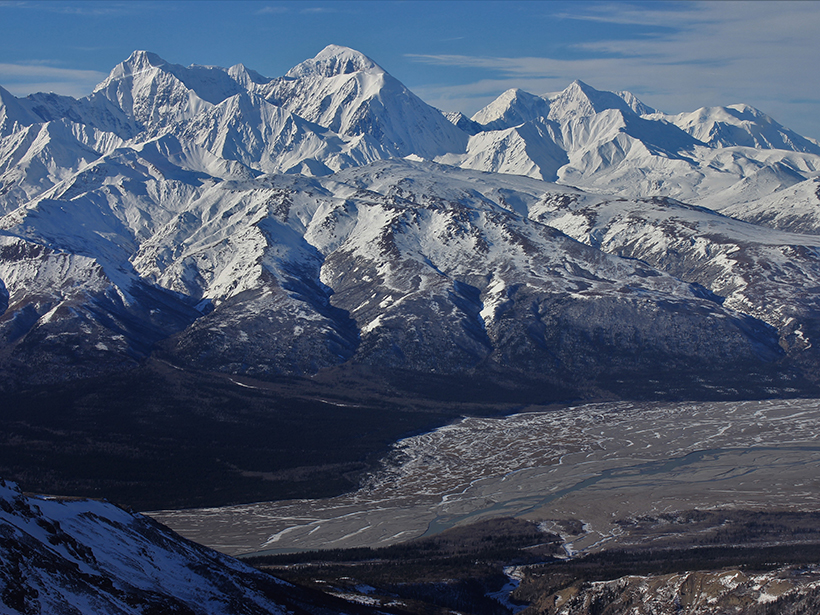Source: Geophysical Research Letters
Alaska’s glacier-fed, braided Tanana River is home to some of the world’s highest-quality salmon fisheries, which have provided sustenance for humans for nearly 12,000 years. Like many Arctic rivers, however, the Tanana and its tributaries are transforming because of rising global temperatures. One prominent change in recent decades is a steady rise in Arctic rivers’ winter flow, which has long puzzled researchers because there is no commensurate increase in precipitation in the Tanana River watershed. Now, a new study suggests that melting glaciers may drive this increased flow by amplifying headwater runoff, the water that drains the mountain region, which is partly lost to the underlying aquifer. In turn, the aquifer feeds the Tanana River year-round. Increased aquifer recharge due to glacier-fed stream corridors may also degrade permafrost from below, further amplifying the seasonal aquifer storage capacity and therefore lowland winter flows.
Liljedahl et al. conducted their study on Jarvis Creek, one of the Tanana’s headwater streams. First, they obtained long-term meteorological records from the National Oceanic and Atmospheric Administration dating from 1947 to 2016, as well as more recent glacier mass balance, runoff, and groundwater levels for the watershed over time. The authors compared recent and historical glacier coverage maps of the area and found that glacier coverage in the Tanana River watershed had decreased by 12% during the 60-year period between 1950 and 2010. Glacier melt accounted for more than 15% of Jarvis Creek’s total annual streamflow, with roughly 46% of that water seeping into the ground and refilling the aquifer below as determined by runoff measurements located 55 kilometers apart. Interestingly, the size of the glacier cover was not linearly related to how much runoff it produces, the team found. In the nearby Phelan Creek, for example, which had 20 times more glacial coverage in its watershed than Jarvis Creek, the glaciers contributed about 47% of annual mean runoff. The nonlinear relationship between glacier cover and runoff has been noted in previous studies of watersheds in the Alps, but the drier Arctic climate may make this disconnect more significant.
Increased glacier-derived groundwater recharge via the headwater stream corridors could explain why winter flows are up in other glacierized Arctic rivers as well, according to the authors. A natural next step would be to explore the role of shrinking glaciers in other large Arctic glaciers. Understanding the role of mountain glaciers and long-term glacier loss is important because even small increases in freshwater runoff could affect sea ice growth, ocean circulation, river ice thinning, and the development of salmon eggs and embryos. (Geophysical Research Letters, https://doi.org/10.1002/2017GL073834, 2017)
—Emily Underwood, Freelance Writer
Citation:
Underwood, E. (2017), Why are Arctic rivers rising in winter?, Eos, 123, https://doi.org/10.1029/2017EO080803. Published on 05 September 2017.
Text © 2017. The authors. CC BY-NC-ND 3.0
Except where otherwise noted, images are subject to copyright. Any reuse without express permission from the copyright owner is prohibited.

